Thinking about launching your own fitness app in 2025?
You’re not alone.
With the surge in health-conscious users and the ever-evolving tech landscape, creating a fitness app has never been more appealing.
But before you dive in, it’s crucial to know the cost to build a fitness app. On average, the fitness app development cost ranges from $25,000 to $250,000.
This wide range covers everything from basic workout trackers to feature-rich platforms with personalized training programs, live classes, and seamless integrations with wearable devices.
Understanding where your app fits within this spectrum can help you plan effectively and allocate your budget wisely.
Whether you’re a startup looking to make a splash or an established business aiming to expand your digital offerings, knowing the cost to make a fitness app is your first step towards success.
Ready to explore what goes into these costs and how you can make informed decisions?
Let’s dive into whether building a fitness app in 2025 is the right move for you and what you need to consider to bring your vision to life.
Should You Build a Fitness App in 2025?
Thinking about diving into the fitness app market this year? You might be wondering if it’s the right move.
Spoiler alert: it absolutely is!
Here are three solid reasons why you should jump on the bandwagon in 2025 and build a fitness app.
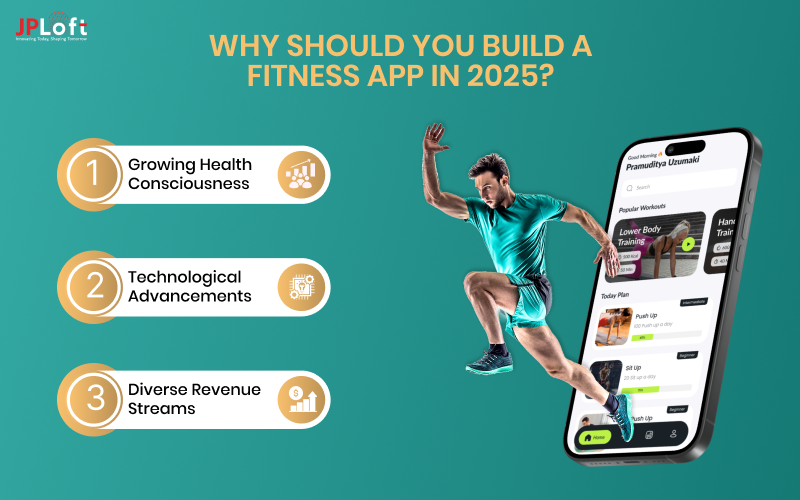
1. Growing Health Consciousness
More people are prioritizing their health and wellness than ever before.
Whether it’s tracking workouts, monitoring nutrition, or managing mental well-being, users are eager for tools that help them stay on top of their fitness goals.
By building a fitness app, you’re meeting a demand that’s only set to increase.
2. Technological Advancements
Technology is evolving at a lightning pace.
From AI-driven personalized workout plans to seamless integration with wearable devices, the possibilities are endless.
These innovations enhance user experience, making your app not just another option but a must-have tool for fitness enthusiasts.
3. Diverse Revenue Streams
A fitness app isn’t just about helping people stay fit; it’s also a fantastic business opportunity.
With multiple ways to monetize, like subscription models, in-app purchases, and partnerships with health brands, the cost to build a fitness app can quickly pay off.
Plus, as your user base grows, so does your potential for profit.
So, why wait? The time is ripe to cost to create a fitness app in 2025 is just right, and the benefits are too good to pass up. Ready to take the plunge?
Average Cost To Develop A Fitness App in 2025
Wondering about the cost to build a fitness app this year? You’re not alone.
Many are curious about the cost to make an app, especially with the range varying so much.
On average, the cost to develop a fitness app falls between $25,000 and $250,000.
But what does this mean for you? Let’s break it down with a quick snapshot:
|
App Complexity |
Estimated Cost |
|
Basic Features |
$25,000 - $50,000 |
|
Moderate Features |
$35,000 - $80,000 |
|
Advanced Features |
$60,000 - $250,000 |
So, how do you decide where your app fits?
It all boils down to what you want to offer your users and how much you’re willing to invest.
Remember, the cost to build a fitness app is an investment in your business’s future, setting the stage for user engagement and long-term success.
Factors That Affect Cost To Build A Fitness App
Building a fitness app is an exciting venture, but understanding the fitness app development cost is crucial to ensure your project stays on track.
So, what exactly influences the cost to create a fitness app?
Let’s unpack the main factors that can make or break your budget.
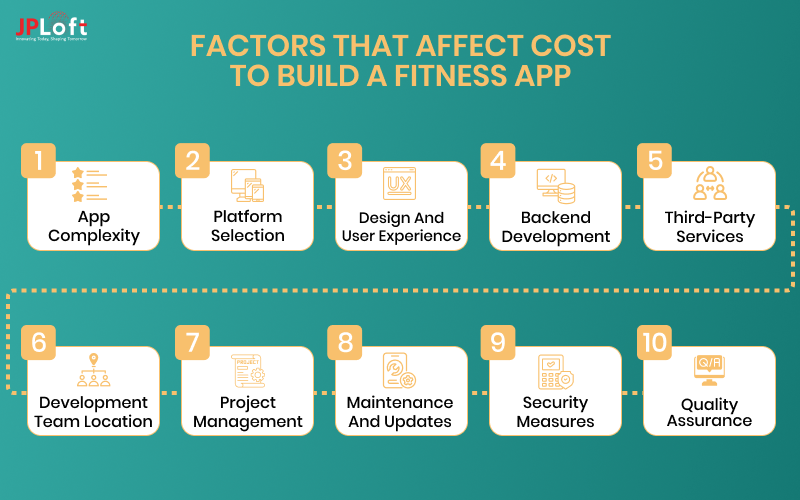
1] App Complexity and Features
Think of your fitness app as a sandwich.
The more layers you add, the more ingredients and the higher the cost.
Basic features like workout tracking and user profiles are relatively inexpensive. However, if you want to include advanced functionalities such as live streaming classes, AI-driven personal training, or integration with wearable devices, the cost to build a fitness app will naturally increase.
Each additional feature requires more development time and resources, so it’s essential to prioritize what’s most important for your users.
|
Feature Type |
Estimated Additional Cost |
Impact on Development Time |
|
Basic Features |
Included in base cost |
Minimal |
|
Moderate Features |
+$20,000 - $30,000 |
Moderate |
|
Advanced Features |
+$30,000 - $40,000+ |
Significant |
2] Platform Selection
Are you aiming to reach both iOS and Android users, or just one?
Developing for multiple platforms can double your cost of fitness app development. Native apps, tailored specifically for each operating system, offer the best performance but come at a higher price.
On the other hand, cross-platform solutions can save you money but might sacrifice some functionality.
Deciding early on which platforms to target can help manage your budget effectively.
|
Platform Type |
Cost Impact |
Development Time Impact |
|
Single Platform (iOS or Android) |
Base cost |
Base time |
|
Multiple Platforms |
+50% of base cost |
+50% of base time |
|
Cross-Platform |
-20% compared to native for multiple |
Reduced time compared to native |
3] Design and User Experience
First impressions matter.
A sleek, intuitive design not only attracts users but also keeps them engaged.
Investing in high-quality design and a seamless user experience can elevate your app but also adds to the cost to make a fitness app.
Custom graphics, animations, and a user-friendly interface require skilled designers and more development time, all of which contribute to the overall cost to develop a fitness app.
|
Design Element |
Cost Impact |
Impact on Development Time |
|
Basic UI/UX Design |
Included in base cost |
Minimal |
|
Custom Graphics & Animations |
+$10,000 - $20,000 |
Moderate |
|
Advanced UX Features |
+$20,000 - $50,000 |
Significant |
4] Backend Development and Infrastructure
Your app’s backend is the engine that keeps everything running smoothly.
Robust servers, secure databases, and efficient data management are non-negotiable for handling user data and ensuring app performance.
Building a reliable backend infrastructure can significantly impact the cost to build a fitness app, but skimping here could lead to issues down the road.
|
Backend Component |
Cost Impact |
Impact on Development Time |
|
Basic Server Setup |
Included in base cost |
Minimal |
|
Advanced Database Solutions |
+$15,000 - $40,000 |
Moderate to Significant |
|
Scalable Infrastructure |
+$20,000 - $60,000 |
Significant |
5] Integration with Third-Party Services
Want to sync your app with popular wearables or fitness trackers?
Integrating third-party APIs and services can enhance your app’s functionality but also adds to the fitness app development cost.
Each integration requires careful planning and testing to ensure seamless performance, so factor these into your budget from the start.
|
Integration Type |
Cost Impact |
Impact on Development Time |
|
Basic API Integrations (e.g., social media) |
Included in base cost |
Minimal |
|
Wearable Device Integrations |
+$10,000 - $25,000 |
Moderate |
|
Complex Third-Party Services |
+$25,000 - $50,000 |
Significant |
6] Development Team Location
Where your development team is based plays a big role in the overall cost.
Hiring developers from regions with higher living costs, like North America or Western Europe, can drive up the cost of fitness app development.
Conversely, outsourcing to countries with lower labor costs can help you save money without compromising quality, if you choose the right partners.
|
Region |
Hourly Rates |
|
North America |
$100 - $200 |
|
Western Europe |
$80 - $150 |
|
Eastern Europe |
$50 - $100 |
|
Asia |
$30 - $80 |
7] Timeframe and Project Management
Need your app up and running in a hurry?
Rushed projects often require more resources and can inflate the cost to create a fitness app.
Proper project management and realistic timelines help keep costs in check.
It’s tempting to set tight deadlines, but ensuring thorough development and testing is worth the investment.
|
Timeline |
Cost Impact |
Impact on Development Quality |
|
Standard Timeline |
Base cost |
High quality |
|
Accelerated Timeline |
+20% - +50% |
Potential compromise on quality |
|
Extended Timeline |
May reduce costs |
Enhanced quality and features |
8] Maintenance and Updates
Launching your app is just the beginning.
Regular maintenance, bug fixes, and updates are essential to keep your app competitive and secure.
These ongoing costs should be factored into your initial budget to avoid any surprises down the line.
Remember, a well-maintained app can save you money in the long run by retaining users and avoiding major overhauls.
|
Maintenance Aspect |
Annual Cost Impact |
Impact on App Longevity |
|
Basic Maintenance |
$5,000 - $10,000 |
Maintains functionality |
|
Regular Updates |
+$10,000 - $20,000 |
Enhances features and security |
|
Major Overhauls |
+$20,000+ |
Extends app lifespan |
9] Security Measures
Protecting user data is paramount, especially in fitness apps that handle personal health information.
Implementing strong security measures, such as encryption and secure authentication, can increase the fitness app development cost.
However, ensuring your app is secure builds trust with your users and safeguards your reputation.
|
Security Feature |
Cost Impact |
Impact on User Trust |
|
Basic Security Protocols |
Included in base cost |
Essential |
|
Advanced Encryption |
+$10,000 - $15,000 |
High |
|
Multi-Factor Authentication |
+$15,000 - $30,000 |
Very High |
10] Testing and Quality Assurance
No one likes a buggy app.
Comprehensive testing and quality assurance are critical to delivering a polished product.
Investing in thorough testing processes can prevent costly fixes post-launch and enhance user satisfaction.
While this adds to the cost to build a fitness app, it’s a worthwhile expenditure for a smooth user experience.
|
Testing Type |
Cost Impact |
Impact on App Quality |
|
Basic Testing |
Included in base cost |
Ensures functionality |
|
Automated Testing |
+$2,000 - $5,000 |
Increases reliability |
|
Comprehensive QA |
+$5,000 - $10,000 |
Maximizes user satisfaction |
Understanding these factors is the first step in planning your fitness app development journey.
By considering each element carefully, you can create a realistic budget that aligns with your vision and goals.
Hidden Cost Affect Factors – Total Reveal
So, you’ve got a solid grasp on the cost to make a fitness app and the main factors influencing it.
But wait, there’s more beneath the surface. Just like finding an unexpected pebble in your workout shoes, hidden costs can sneak up on you if you’re not careful.
Let’s uncover these sneaky expenses to ensure your budget stays on point.
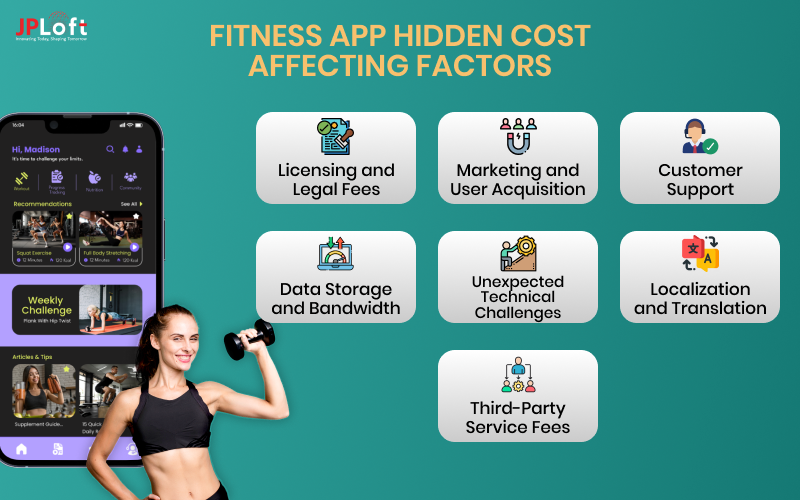
► Licensing and Legal Fees
Ever thought about the fine print?
Licensing and legal fees can catch many off guard.
Whether it’s securing rights for third-party content, ensuring compliance with health regulations, or protecting your intellectual property, these costs can add up quickly.
|
Hidden Cost |
Estimated Cost |
Impact on Budget |
|
Licensing Fees |
$5,000 - $10,000 |
Moderate |
|
Legal Consultations |
$10,000 - $15,000 |
Significant |
|
Compliance Certifications |
$15,000 - $20,000 |
Variable |
► Marketing and User Acquisition
Building a fantastic app is just half the battle.
Getting it into the hands of users requires a solid marketing strategy, which often involves costs that aren’t immediately apparent during development.
|
Marketing Expense |
Estimated Cost |
Impact on Budget |
|
App Store Optimization |
$3,000 - $10,000 |
Moderate |
|
Paid Advertising |
$10,000 - $50,000 |
High |
|
Influencer Partnerships |
$5,000 - $20,000 |
Variable |
► Customer Support and Community Management
Keeping your users happy doesn’t stop at launch.
Providing ongoing customer support and managing a community can incur additional expenses that you might not have planned for initially.
|
Support Cost |
Estimated Cost |
Impact on Budget |
|
Customer Support Staff |
$10,000 - $30,000/year |
High |
|
Community Management Tools |
$2,000 - $10,000/year |
Moderate |
|
Training and Development |
$5,000 - $15,000 |
Variable |
► Data Storage and Bandwidth
As your user base grows, so does the amount of data your app needs to handle.
Scaling your data storage and bandwidth can lead to unexpected costs if not properly planned.
|
Infrastructure Cost |
Estimated Cost |
Impact on Budget |
|
Data Storage |
$10,000 - $20,000/year |
High |
|
Bandwidth Usage |
$5,000 - $20,000/year |
Moderate |
|
Cloud Services Upgrades |
$15,000 - $40,000/year |
Significant |
► Unexpected Technical Challenges
No project is without its surprises.
Technical glitches, unforeseen bugs, or changes in project scope can all lead to additional expenses.
|
Technical Challenge |
Estimated Cost |
Impact on Budget |
|
Bug Fixes and Patches |
$5,000 - $20,000 |
Moderate |
|
Feature Scope Changes |
$10,000 - $30,000 |
Significant |
|
Emergency Support |
$5,000 - $15,000 |
Variable |
► Localization and Translation
If you plan to launch your fitness app in multiple regions, localization and translation are essential.
This ensures your app resonates with users worldwide but can also introduce additional costs.
|
Localization Expense |
Estimated Cost |
Impact on Budget |
|
Translation Services |
$5,000 - $20,000 |
Moderate |
|
Localization Testing |
$3,000 - $10,000 |
Variable |
|
Regional Customizations |
$10,000 - $25,000 |
Significant |
► Third-Party Service Fees
Integrating third-party services like payment gateways, analytics tools, or fitness data providers often comes with recurring fees that can affect your budget over time.
|
Service Fee |
Estimated Cost |
Impact on Budget |
|
Payment Gateway Fees |
2-3% of transactions |
Variable |
|
Analytics Tools |
$1,000 - $10,000/year |
Moderate |
|
Fitness Data APIs |
$5,000 - $15,000/year |
Significant |
Avoiding Surprise Expenses
Now that you’re aware of these hidden costs, how can you keep them from derailing your budget? Here are a few tips:
-
-
Plan Ahead: Anticipate potential hidden costs during the initial planning phase.
-
Choose Reliable Partners: Work with experienced developers and service providers who can help foresee and manage these expenses.
-
Set Aside a Contingency Fund: Allocate a portion of your budget specifically for unexpected costs.
-
Regularly Review Your Budget: Keep a close eye on your finances throughout the development process to catch any overspending early.
-
By staying vigilant and prepared, you can navigate these hidden costs smoothly, ensuring your fitness app project stays on track and within budget.
Popular Fitness Apps And How Much Does It Cost To Build An App Like That
Ever wondered how much it takes to create the next big fitness app?
Let’s take a stroll through some of the most popular fitness apps out there and break down the cost to build a fitness app similar to each.
This way, you can get a clearer picture of what your dream app might cost.
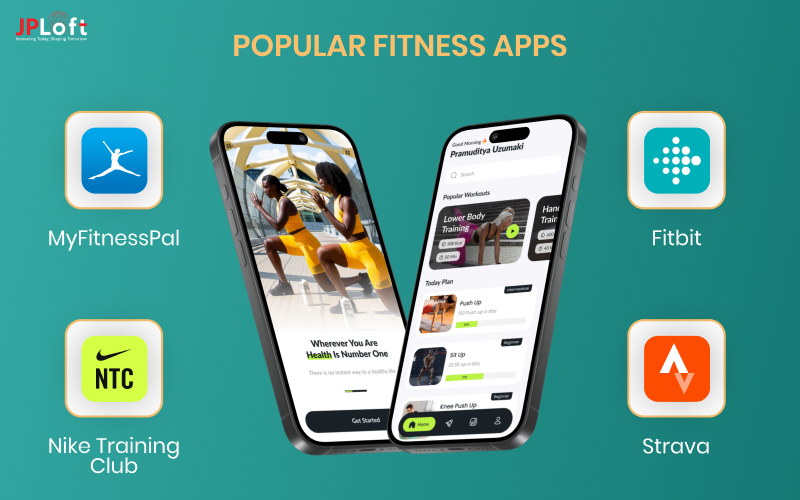
1. MyFitnessPal
MyFitnessPal is a powerhouse in the fitness app world, offering comprehensive features like calorie counting, meal logging, and integration with various wearable devices.
Estimated Development Cost: Building an app like MyFitnessPal would likely fall in the range of $150,000 to $250,000.
Why This Cost?
The extensive database for food logging, seamless integration with multiple devices, and robust user analytics all contribute to the higher cost. Plus, ensuring accurate tracking and a user-friendly interface requires significant investment.
2. Fitbit
Fitbit goes beyond just tracking steps. It monitors heart rate, sleep patterns, and even offers guided workouts, all synced with Fitbit’s range of wearable devices.
Estimated Development Cost: Creating an app like Fitbit can cost anywhere between $200,000 to $300,000.
Why This Cost?
The integration with hardware, real-time data syncing, and advanced health metrics increase the complexity. Additionally, developing a secure backend to handle sensitive health data adds to the overall cost.
3. Nike Training Club
Nike Training Club offers a variety of workout plans, instructional videos, and personalized training programs, all backed by Nike’s brand strength.
Estimated Development Cost: A Nike Training Club-like app would be in the ballpark of $180,000 to $270,000.
Why This Cost?
High-quality video content, personalized training algorithms, and a sleek, engaging user interface are key factors. The need for smooth streaming and a rich media experience drives up the fitness app development cost.
4. Strava
Strava is a favorite among runners and cyclists, providing detailed performance tracking, social sharing, and community challenges.
Estimated Development Cost: Building an app like Strava would typically cost between $160,000 to $240,000.
Why This Cost?
GPS tracking, real-time performance analytics, and social features require sophisticated technology. Additionally, maintaining a vibrant community with regular updates and features adds to the overall expense.
By understanding what goes into building these popular apps, you can better estimate the cost to create a fitness app that meets your vision and your users’ needs.
How To Minimize Fitness App Development Cost Without Compromising Quality
Worried about the cost to build a fitness app skyrocketing?
Don’t sweat it! There are smart strategies to keep your cost to make a fitness app in check without cutting corners.
Let’s dive into some savvy tips that ensure you get the best bang for your buck.
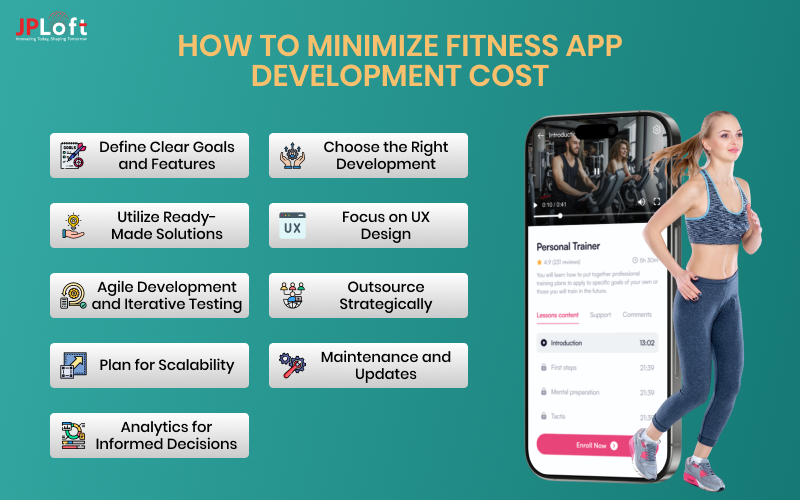
1. Define Clear Goals and Features
Before you start, get crystal clear on what your app needs to do.
Why?
A well-defined scope prevents unnecessary features that inflate the cost to create a fitness app.
Pro Tip: Prioritize must-have features and save the nice-to-haves for later updates.
2. Choose the Right Development Approach
Deciding between native and cross-platform development can make a big difference.
Rethink Native: Building separate apps for iOS and Android doubles the cost to make a fitness app.
Opt for Cross-Platform: A single codebase can reduce expenses by up to 30%!
Question: Why pay more when you can achieve the same results with less?
3. Utilize Ready-Made Solutions and SDKs
Don’t reinvent the wheel. Leverage existing software development kits (SDKs) and APIs.
Benefits
-
-
Saves Time: Faster development means lower costs.
-
Proven Reliability: Tested solutions reduce the risk of bugs.
-
Example: Integrate third-party payment gateways instead of building your own.
4. Focus on User Experience (UX) Design
A great UX doesn’t have to break the bank.
Keep It Simple: Clean, intuitive designs are both user-friendly and cost-effective.
Avoid Over-Designing: Fancy animations and complex graphics can drain your budget.
Think: Simple can be stunning without the hefty cost.
5. Agile Development and Iterative Testing
Adopt an agile approach to stay flexible and responsive.
Why Agile?
-
-
Continuous Feedback: Adjust features based on real user input.
-
Early Problem Detection: Catch issues before they escalate costs.
-
Rhetorical Question: Isn’t it better to fix things as you go rather than face a hefty bill later?
6. Outsource Strategically
Choosing the right development partner can save you a bundle.
Look Beyond Cost: Consider expertise, communication, and reliability.
Consider Offshoring: Outsourcing to regions with lower rates can reduce the cost of fitness app development without sacrificing quality.
Advice: Don’t just go for the cheapest option; find a balance between cost and quality.
7. Plan for Scalability
Build with the future in mind to avoid costly overhauls.
Scalable Architecture: Ensures your app can grow with your user base without major redesigns.
Benefit: Long-term savings by preventing the need for extensive modifications down the road.
8. Regular Maintenance and Updates
Investing in maintenance might seem counterintuitive to saving money, but it pays off.
Why Maintain?
-
-
Prevents Major Issues: Regular updates keep your app running smoothly.
-
Enhances User Retention: Happy users stick around longer.
-
Think Ahead: A little maintenance now saves a lot in the future.
9. Leverage Analytics for Informed Decisions
Use data to guide your development priorities.
Benefits:
-
-
Identify Popular Features: Focus on what users love.
-
Cut Unused Features: Stop wasting resources on what doesn’t matter.
-
Question: Why spend money on features that no one uses?
By implementing these strategies, you can significantly reduce the fitness app development cost while still delivering a top-notch product. It’s all about working smarter, not harder, to create an app that meets your goals and delights your users.
JPLoft – Your Partner in Fitness App Development
Looking to bring your fitness app vision to life without breaking the bank?
JPLoft is your go-to fitness app development company.
Our expert team combines creativity with technical prowess to deliver high-quality apps tailored to your unique needs.
Whether you’re aiming for a simple workout tracker or a feature-rich wellness platform, we ensure your app stands out in the competitive market.
Partner with us to navigate the complexities of app development, optimize your budget, and achieve outstanding results.
Let JPLoft transform your fitness app idea into a reality that empowers users and drives your business forward.
Conclusion
Building a fitness app is more than just a project; it’s an investment in your vision to empower others on their wellness journey. Understanding the cost to create a fitness app ranging from $25,000 to $250,000 is the first step toward making informed decisions. By recognizing the factors that influence the fitness app development cost and being aware of hidden expenses, you can navigate the development process with confidence.
So, are you ready to take the plunge and bring your fitness app idea to life? With the right planning and the right partner, your app can make a significant impact in the ever-growing fitness industry.
FAQs
The average cost to develop a fitness app in 2025 ranges from $25,000 to $250,000. This variation depends on factors like app complexity, features, design, platform selection, and the development team’s location.
You can minimize the cost to create a fitness app by defining clear goals, prioritizing essential features, choosing the right development approach (like cross-platform development), leveraging ready-made solutions and SDKs, focusing on a simple yet effective UX design, adopting agile development practices, outsourcing strategically, planning for scalability, and utilizing analytics to make informed decisions.
Hidden costs can include licensing and legal fees, marketing and user acquisition expenses, customer support and community management, data storage and bandwidth, unexpected technical challenges, localization and translation, and third-party service fees. It’s essential to account for these to avoid budget surprises.
The cost to build a fitness app increases with the complexity and number of features. Basic features like workout tracking and user profiles are on the lower end, while advanced features such as live streaming classes, AI-driven personal training, and wearable device integration can significantly raise the fitness app development cost.
Absolutely! A great user experience not only enhances user satisfaction and retention but also contributes to the overall success of your app. Investing in high-quality UX design may increase the cost to create a fitness app, but it pays off by attracting and retaining more users.
Yes, outsourcing to regions with lower labor costs can reduce the cost of fitness app development. However, it’s crucial to choose experienced and reliable partners to ensure quality isn’t compromised. Strategic outsourcing can provide significant savings while maintaining high standards.
After launching, you should budget for regular maintenance, updates, bug fixes, customer support, marketing efforts, and scaling infrastructure as your user base grows. These ongoing expenses are essential to keep your app competitive and functional.
Backend development is critical as it ensures your app runs smoothly, handles user data securely, and integrates seamlessly with other services. Investing in a robust backend infrastructure can increase the cost to develop a fitness app but is vital for the app’s reliability and scalability.
The development timeframe can vary based on the app’s complexity and features. On average, developing a fitness app can take anywhere from 3 to 9 months. Proper project management and clear goal-setting can help streamline the process and keep costs under control.






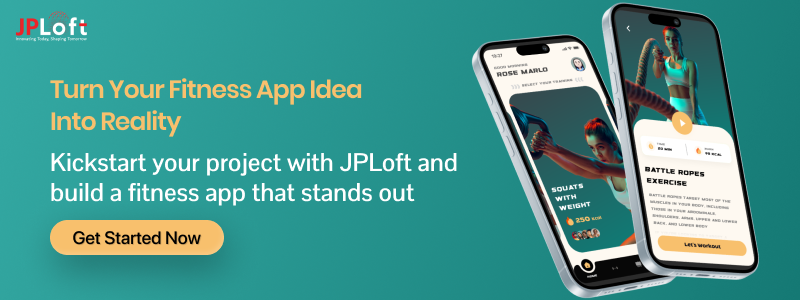
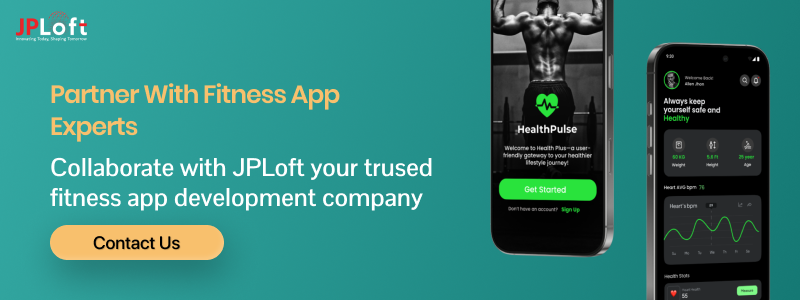

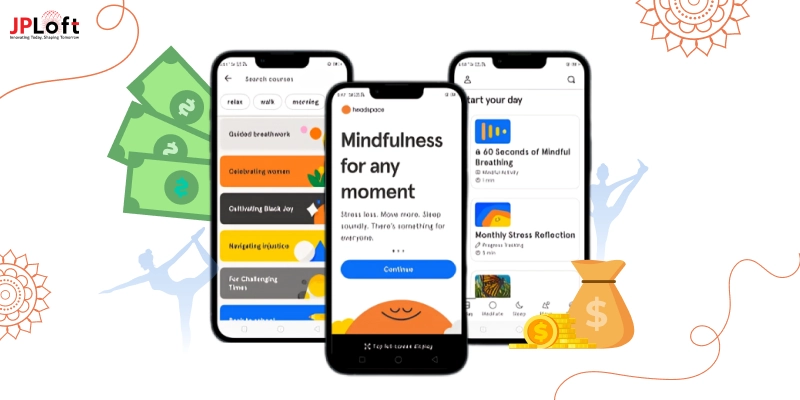
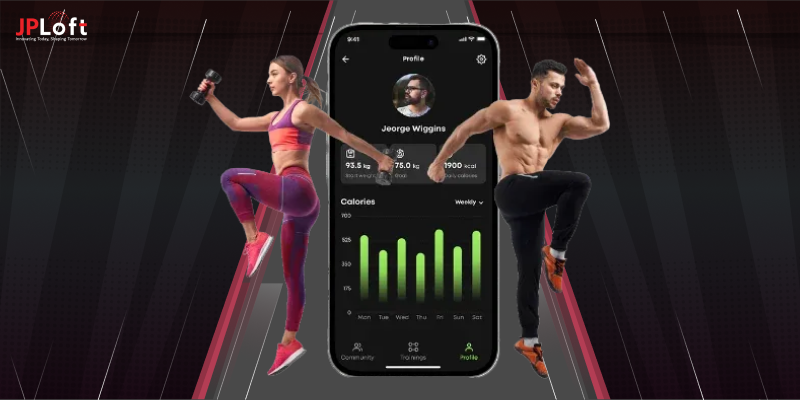




Share this blog